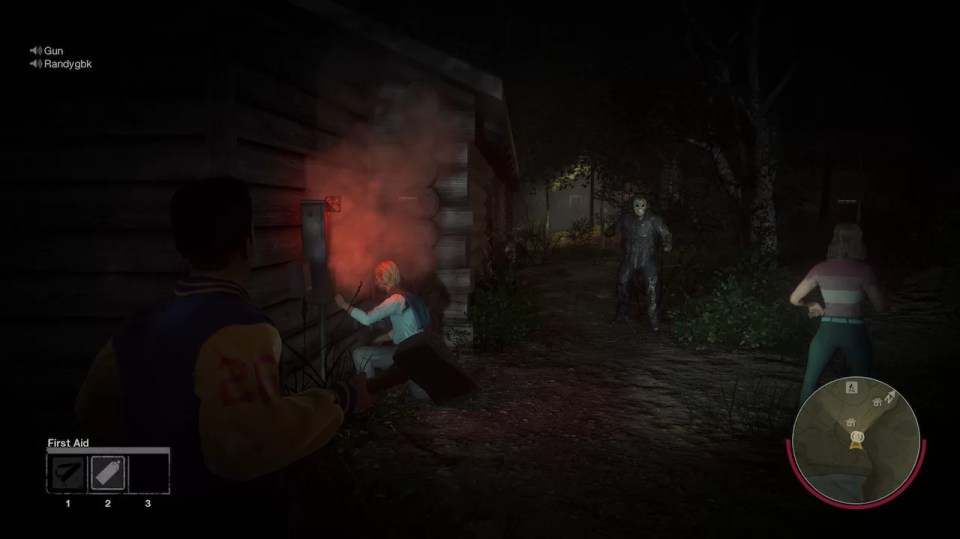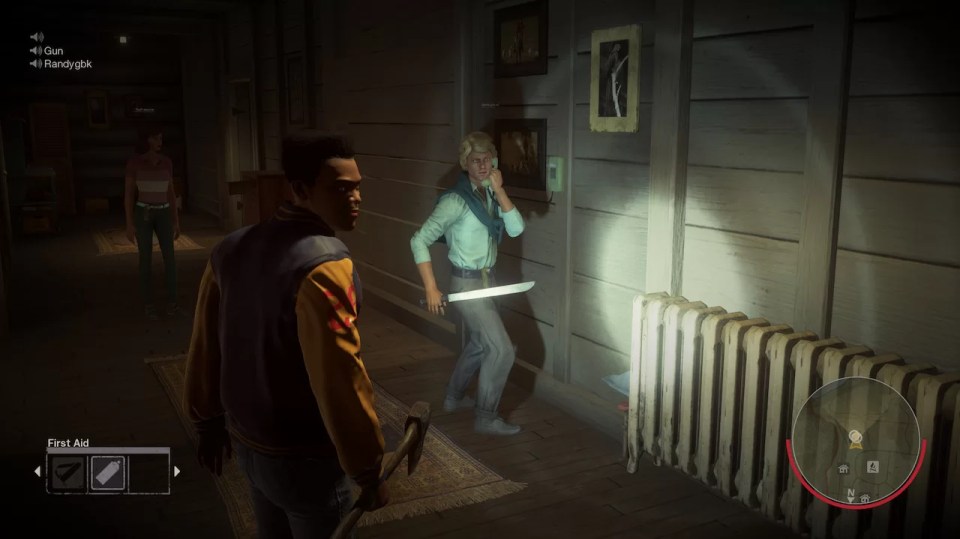recipe for horror: asymmetric multiplayer and slasher video games
Since it’s spooky season, I thought I’d write a post on a game mode that is the perfect match for horror video games. I’m talking about asymmetric multiplayer, in which different players play and experience the game in a different way from each other. Typically, players will have different roles, capabilities and goals, while affecting the game outcome for others.
While there are many ways to design an asymmetric multiplayer game, I will be focusing on a “one player versus everyone else” situation, which is perfect for the slasher type of horror games. Games like Dead by Daylight and Friday the 13th: The Game are designed this way because it works so well.
Asymmetric multiplayer and the slasher genre bring out the best in each other. Here are some of the reasons I think they’re a match made in heaven — or hell.

1. Story Structure
The premise of asymmetric multiplayer games is the perfect setup for a typical slasher film. At some point, these films are reduced to a chase, where the slasher hunts down the remaining victims. Gameplay featuring an overpowered killer versus a number of helpless survivors is therefore an instantly recognisable story that players can understand straight away.
This familiarity makes the game’s goals very clear to the players. This means that the game does not need a lengthy tutorial or setup to inform the players about characters and motivations. Instinctively, the slasher will want to hunt down the victims, and the victims will want to get away. Consequently, players aren’t confused about what they need to do.
Additionally, matching the structure of the popular slasher genre makes these games exceedingly fun to watch. Over the past month, Dead by Daylight has ranked between the 20th and 21st top game viewed on Twitch. In the first week of October, it brought in more than 20,000 concurrent viewers and about 3.8 million hours of watch time. That’s higher than heavy hitters like PlayerUnknown’s Battlegrounds (26th) and Overwatch (28th) according to TwitchTracker and SullyGnome.

For what started as an indie game, that’s pretty darn good. There’s plenty of game design techniques the designers use to invoke fear in Dead by Daylight players, making it scary and therefore fun to play and watch. But as for the good fit with asymmetric multiplayer, I think story structure has a lot to do with it. There’s very little buy-in needed for a game of spooky hide-and-seek, because players and viewers are already familiar with the trope.
In a 2018 GDC talk, Dead by Daylight‘s Creative Director Dave Richard mentioned the importance of what he called “coffee machine stories” in the development process. After team members playtested the game, their discussions about it would often focus on the stories that emerged rather than technical bugs.
“What was amazing for us, and what we tried to keep is that when team members would stop to play the game and go get a coffee, instead of talking about features, or bugs, or specific mechanics, they would talk about the stories, the emergent scenarios that happened during the match. This was really, really interesting and something we wanted to keep until the game was actually released.”
— Dave Richard, Creative Director of Dead by Daylight1
These discussions highlight the importance of story in these sort of games. Asymmetric multiplayer supports the slasher-style narrative and allows emergent scenarios within each match’s story that becomes what players remember and talk about after playing the game.

2. Two Different Fantasies and Gameplay Styles
Having two factions gives players the choice to live out one of two distinct fantasies. Being the killer is about feeling powerful, and naturally leads to a solo play style. On the other hand, the survivors have fun being scared, and play as a team.
It’s interesting to note that the objectives of the two types of gameplay are not reflective. The killer chases the survivors, but the survivors are not meant to retaliate and attack the killer. (There is one scenario in Friday the 13th: The Game where the counselors can defeat Jason, but it’s a complex chain of events that’s more of an Easter egg than a viable means of regularly winning a match.)
Having non-reflective objectives is an important distinction because it sets up the game as a chase scenario rather than a battle situation. This gives game designers the freedom to design a large map full of traps, surprises and hiding places. It also breaks the tight coupling between the killer’s and survivors’ abilities because they don’t both act on each other, thus somewhat reducing the strain of balancing them.
What results is the unique asymmetrical gameplay where the killer acts on the survivors in a PvP fashion, while the survivors act on the environment in a PvE style. Dead by Daylight goes one step further in distinguishing the two formats by having killers play in first-person and survivors in third-person.
Instead of trying to defeat the killer, survivors are usually finding items, unlocking escape routes, or sneaking around to help each other. Circling back, this matches the central conflict of slasher movies, where the killer is too powerful to take down, but can be avoided and outsmarted, especially if survivors work together.
Asymmetric multiplayer fulfills both fantasies. It puts survivors in a situation against seemingly impossible odds, thus increasing the feeling of victory if they do escape. At the same time, by making the survivors unable to strike back and have to scramble to get away, it increases the killer’s feeling of power and control.

3. The Human Element
So far, we’ve got a great story structure, and two roles for the killing and surviving fantasies. But asymmetric multiplayer’s most important advantage in slasher video games is the human element on both factions.
We can split up this sort of asymmetric game into two separate games. One is a single player monster game where you play as a monster and hunt a group of scared (NPC) villagers. The other is a multiplayer survival game where you work with other players to escape from a scary (NPC) boss monster. These games exist in the world, but are not as compelling.
This is because having non-player characters on either side dulls the experience. If I’m deeply invested in a power fantasy, chasing and killing a group of computer-generated characters is not as satisfying as terrorising real people. Conversely, being chased by a non-player monster is not as scary as if it was a real person.
Humans are irrational. There’s no pattern of movement, no walk cycle, no memorised probabilities of what a killer is going to do once the match begins. On the other side of the coin, there’s no accounting for survivors that decide to leave their teammates versus work together.
This unpredictability is a large part of what makes Dead by Daylight and Friday the 13th: The Game fun to replay and fun to watch. Because of the human element, you never know what might happen. As a result, asymmetric multiplayer is the perfect match for the horror-slasher genre.

Do Different Video Game Formats Suit Different Genres?
This style of asymmetric multiplayer and slasher video games are such a good match, that it makes me wonder about other possible successful adaptations of genre movies to video games. Is there a formula for adapting movies successfully into an interactive format? What type of game would work best for a crime film, action movie, or even a romantic comedy? It would be interesting to go down this line of inquiry in a future analysis.

